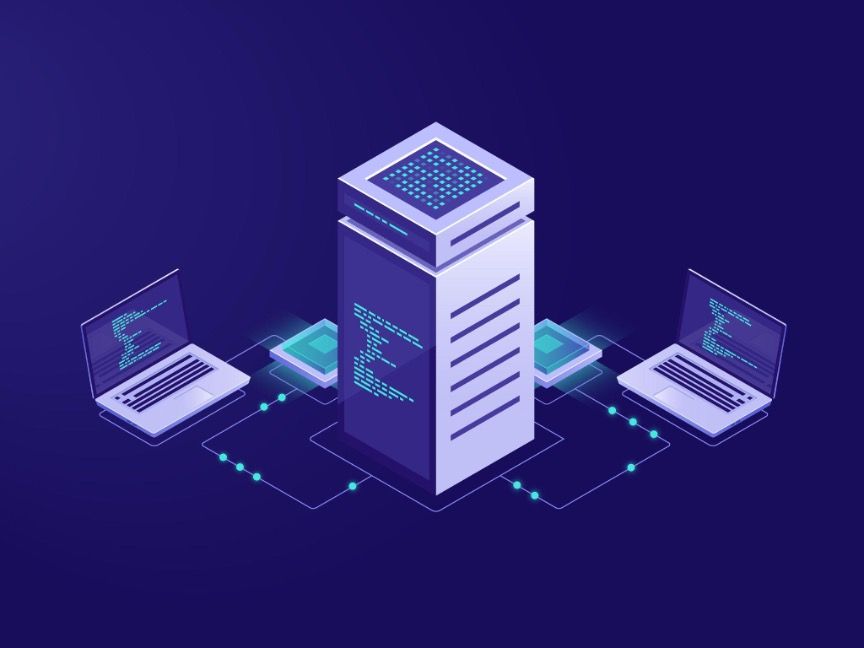Serverless-ly Simple - How to Unlock the Benefits of Serverless Architecture in Your Cloud

In today's digital world, businesses can no longer afford to be slow to adopt advanced technology. As such, the need for a more efficient, cost-effective, and secure way to host applications has become a necessity. Enter serverless architecture: a revolutionary way of building and running applications that eliminates the need for servers and allows developers to focus less on infrastructure and more on the application itself. In this blog post, we'll look at what serverless architecture is and how it works, the business benefits of serverless architecture, and when it’s appropriate to use a serverless architecture, as well as its drawbacks and security considerations.
What is serverless architecture?
Serverless architecture is a type of cloud computing that allows businesses to build and run applications without having to manage servers or hardware. It is a way of building and running applications and services without having to worry about the underlying infrastructure. Instead of running applications on physical or virtual servers, serverless architecture allows applications to run on cloud-based functions, called "serverless functions".
Serverless vs. Containers
Serverless architecture is different from containers, which is a more traditional way of running applications. Containers are essentially self-contained packages of code and dependencies that can run on any platform, allowing developers to package and run their applications on a wide variety of machines. Containers require more upfront management and maintenance than serverless architecture, as the developer must manage the underlying infrastructure and keep the application up to date.
In contrast, serverless architecture is more of a "hands-off" approach, as the cloud provider takes care of the underlying infrastructure and the developer can focus on writing code. Because there are no upfront costs for servers and no ongoing costs for maintenance or upgrades, serverless architecture is more cost-effective and efficient than containers.
How does serverless architecture work?
Serverless architecture works by running applications on cloud-based functions, called "serverless functions". These serverless functions are essentially pieces of code that are executed in response to certain events, such as an API call or a new file being uploaded to a storage service. When an event occurs, the serverless function is triggered and the code is executed.
The cloud provider takes care of the underlying infrastructure, such as scaling the serverless function as needed and managing any security or compliance issues. This means that the developer doesn't have to manage the infrastructure by hand and can instead focus on the application itself.
Business benefits of serverless architecture
Serverless architecture offers several business benefits. First, it is incredibly cost-effective. As there are no upfront costs for servers and no ongoing costs for maintenance or upgrades, businesses can save money on infrastructure costs.
Second, serverless architecture is incredibly efficient. By eliminating the need to manage servers or hardware, developers can focus on writing code, which makes development faster and more efficient.
Third, serverless architecture is more secure. As the cloud provider takes care of the underlying infrastructure, businesses don't have to worry about infrastructure security or compliance issues, as the cloud provider is responsible for managing these.
Finally, serverless architecture is more scalable. As the cloud provider takes care of scaling the serverless function as needed, businesses can more easily scale their applications as their needs change.
When is it Appropriate to Use a Serverless Architecture?
Serverless architecture is best suited for compute-intensive applications that require high scalability. Examples of applications that are well-suited to serverless architecture include web applications, mobile applications, media streaming applications, and machine learning applications.
Serverless architecture also works well for applications that need to be available all the time, like mission-critical applications. Since the infrastructure is taken care of by the cloud provider, applications that run on a serverless architecture are less likely to go down because of server maintenance or upgrades.
So is Serverless Architecture Worth it?
Overall, serverless architecture is a cost-effective and efficient way to build and run applications. It eliminates the need for servers and allows developers to focus less on infrastructure and more on the application itself. And with the major cloud providers offering serverless platforms, it has never been easier to get started with serverless architecture.
However, there are some drawbacks to serverless architecture. For example, it can be difficult to debug serverless functions, as the code is executed in the cloud and can be hard to access. In addition, serverless architecture can be expensive if the application requires a lot of compute resources, as the cost of running a serverless function is based on the amount of compute time it takes to execute the code.
Security and Compliance Considerations for Serverless Applications
While serverless architecture offers several benefits, it is important to remember that it is still a cloud-based solution and as such, security and compliance must be taken into consideration.
It is important to ensure that the code is securely written and that any sensitive data is encrypted. It's also important to make sure that the serverless functions are maintained and updated to the most recent engine versions so that any security problems can be fixed quickly.
Examples of serverless architecture
Serverless architecture is being used by many businesses to build and run applications. Examples of applications that are built on serverless architecture include web applications, mobile applications, media streaming applications, machine learning applications, and more.
Serverless Use Cases
Serverless architecture can be used for many different kinds of apps, such as web apps, mobile apps, apps that stream media, apps that help with machine learning, and more.
For example, serverless architecture can be used to build and run web applications. By using serverless functions, businesses can quickly and easily deploy web applications without having to worry about managing servers or hardware.
Serverless architecture can also be used to build and run mobile applications. By using serverless functions, businesses can quickly and easily deploy mobile applications without having to worry about managing servers or hardware.
Media streaming applications can also be built and run using serverless architecture. By using serverless functions, businesses can quickly and easily deploy media streaming applications without having to worry about managing servers or hardware.
For example, Netflix uses serverless architecture to provide users with a seamless streaming experience.
Finally, machine learning applications can be built and run using a serverless architecture. By using serverless functions, businesses can quickly and easily deploy machine learning applications without having to worry about managing servers or hardware.
Conclusion
Serverless architecture is a cost-effective and efficient way to build and run applications. It eliminates the need for servers and allows developers to focus less on infrastructure and more on the application itself.
With the major cloud providers offering serverless platforms, it has never been easier to get started with serverless architecture for your compute-intensive applications requiring high scalability.
However, it is important to remember that serverless architecture is still a cloud-based solution, and as such, security and compliance must be taken into consideration.
Overall, serverless architecture is a powerful tool that can help businesses save time and money, while allowing them to focus on developing their applications. With the right approach, businesses can unlock the benefits of serverless architecture in their cloud.
